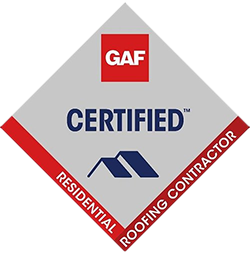Hundreds of Illinois houses suffer water damage due to ice dams in the winter, and many people do not even notice the damage until it is too late.
What Are Ice Dams?
Ice dams occur when heat escapes from your attic to melt snow on the roof and then refreezes at the edge of the roof, causing a "dam." Additional snowmelt backs up on top of the roofing materials and leaks through the roof, causing water to get inside your house. Once inside, water can ruin your ceiling, insulation, framing, drywall, and even your flooring. Preventing ice dams could save you thousands of dollars in home repairs. TTLC Tip: Make sure to check for icicles since they are formed by snow melting off the roof and refreezing and are often a sign of ice dams. Also, be sure to check any water stains along the interior of your home. These two indicate that an ice dam has formed and water has infiltrated the roof system.
Ice dams can damage:
- Attic insulation
- Interior walls and ceilings
- Mold, mildew
- Paint (blisters and bubbling)
- Roofing
- Shingles
- Siding
- Structural framing
- Window casings
Does Insurance Cover Ice Dams?
If an ice dam damages your roof, do not panic. It is common for homeowners insurance to cover ice dam damage. Many standard homeowners' policies cover sudden and accidental damage from leaking roofs and damage from ice, snow, or sleet.
Filing an insurance claim to repair the damage done by ice dams is no different than any other insurance claim. Keep in mind: your insurance policy may require you to mitigate the damage to prevent any further damage from occurring, which is why TTLC - Roofing Siding and Gutters can help before damages worsen.
Preventing ice dams
The best approach to prevent ice dams and spare yourself the maintenance and insurance headache is to be proactive.
Here are a few steps you should take ahead of winter to help prevent ice dam formation:
- Clear your gutters from any leaves and debris so melting snow can flow off the roof.
- Monitor your roof in cold weather. Check for icicles and water stains as this means the conditions for an ice dam to form are present.
- Check for signs of insufficient ventilation and seal areas where warm air could leak from your home to the attic.
These preventative measures can go a long way toward keeping winter from ruining your spring.
Ice dam damage? Schedule a Free Consultation
Removing an ice dam from your roof immediately after spotting the signs can be critical to help prevent damage to your home. If you notice ice dams building up, the best option is to hire a professional contractor like TTLC - Roofing Siding and Gutters to remove the ice dams without damaging your home’s exterior.
Tags
Subscribe to TTLC, Inc's Blog



Comments